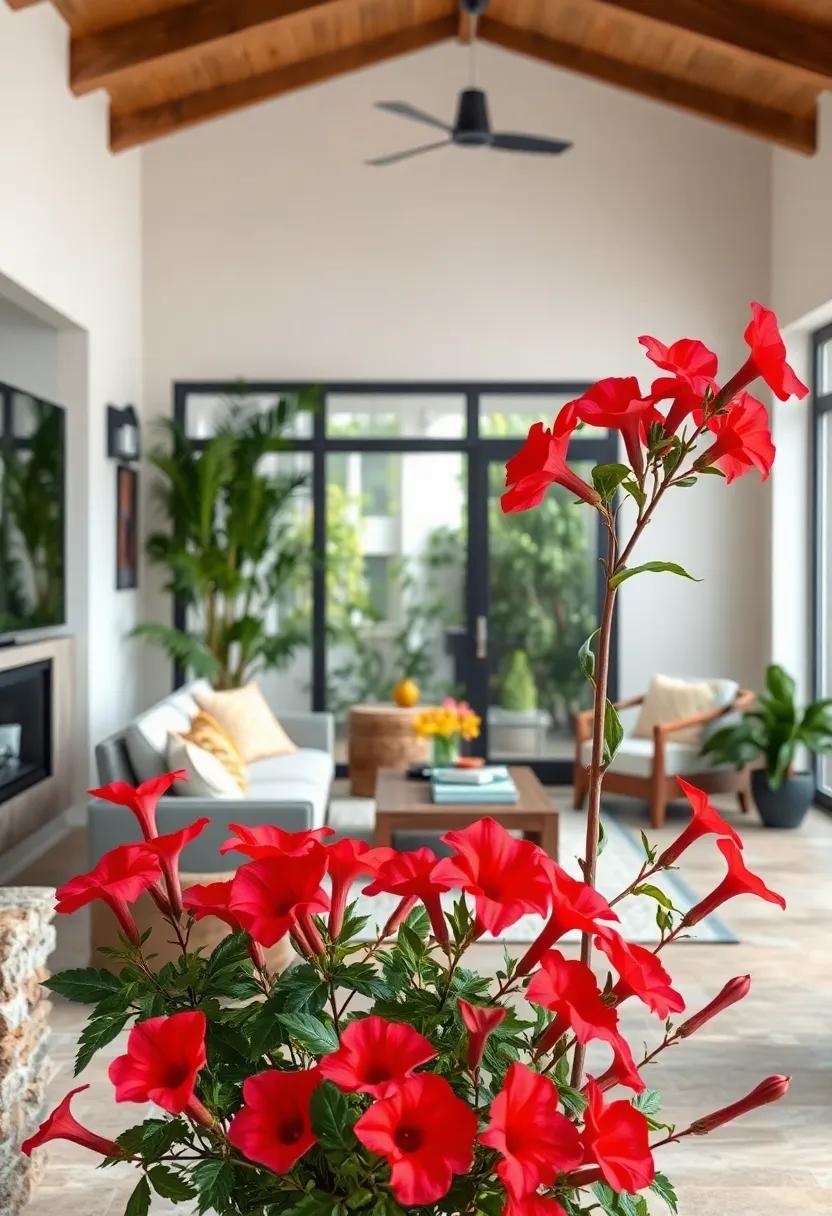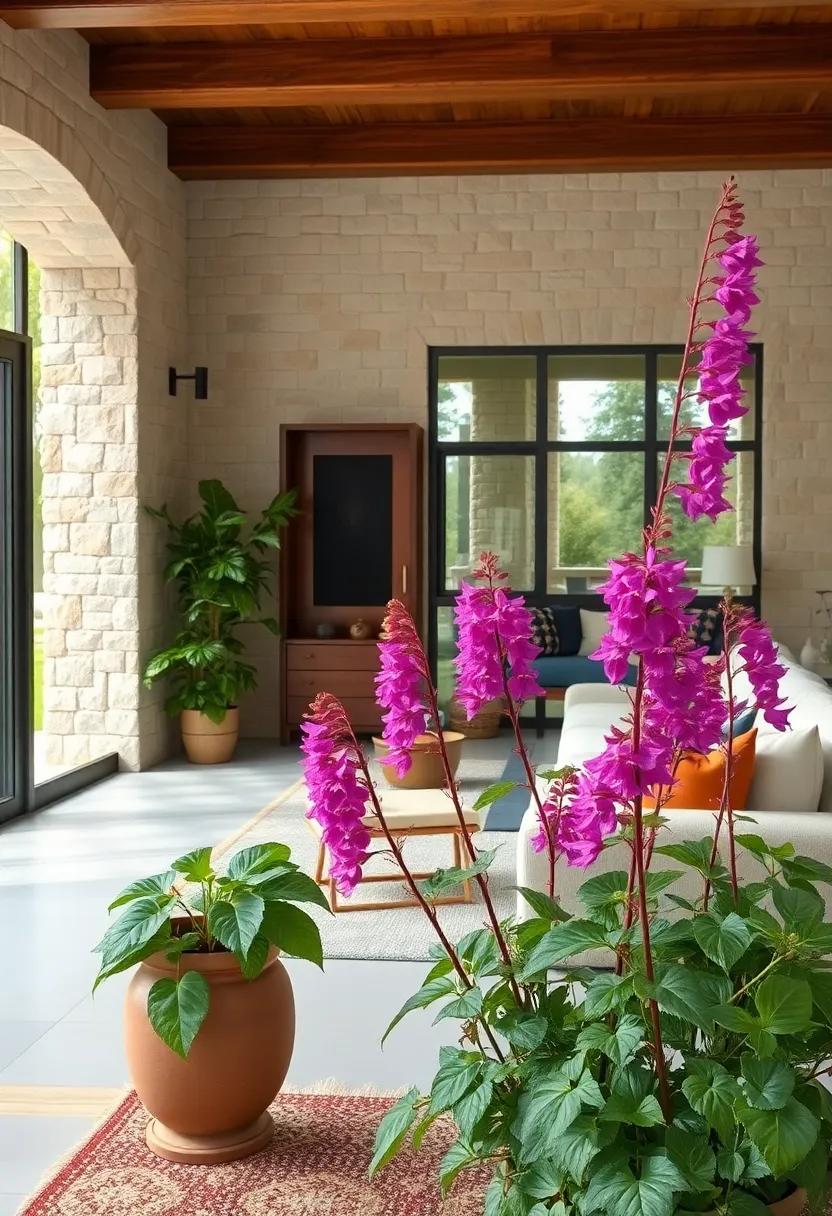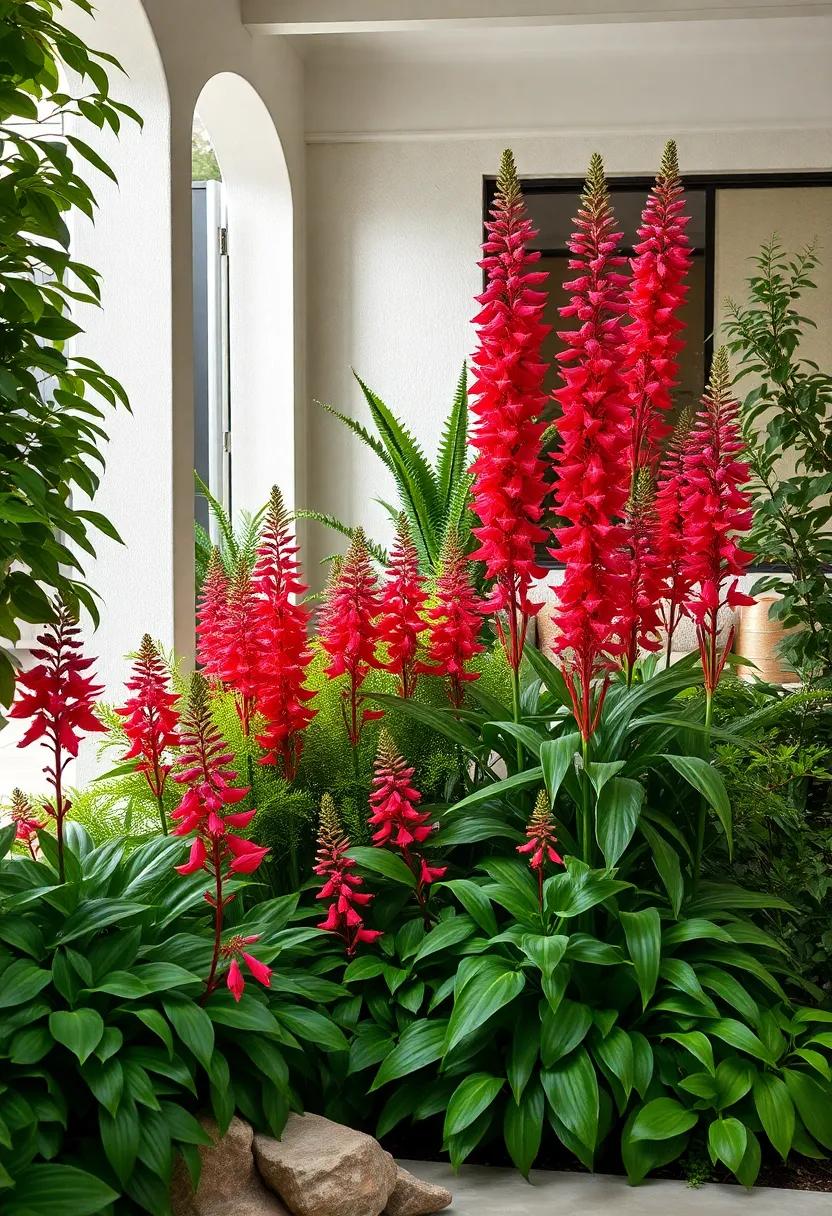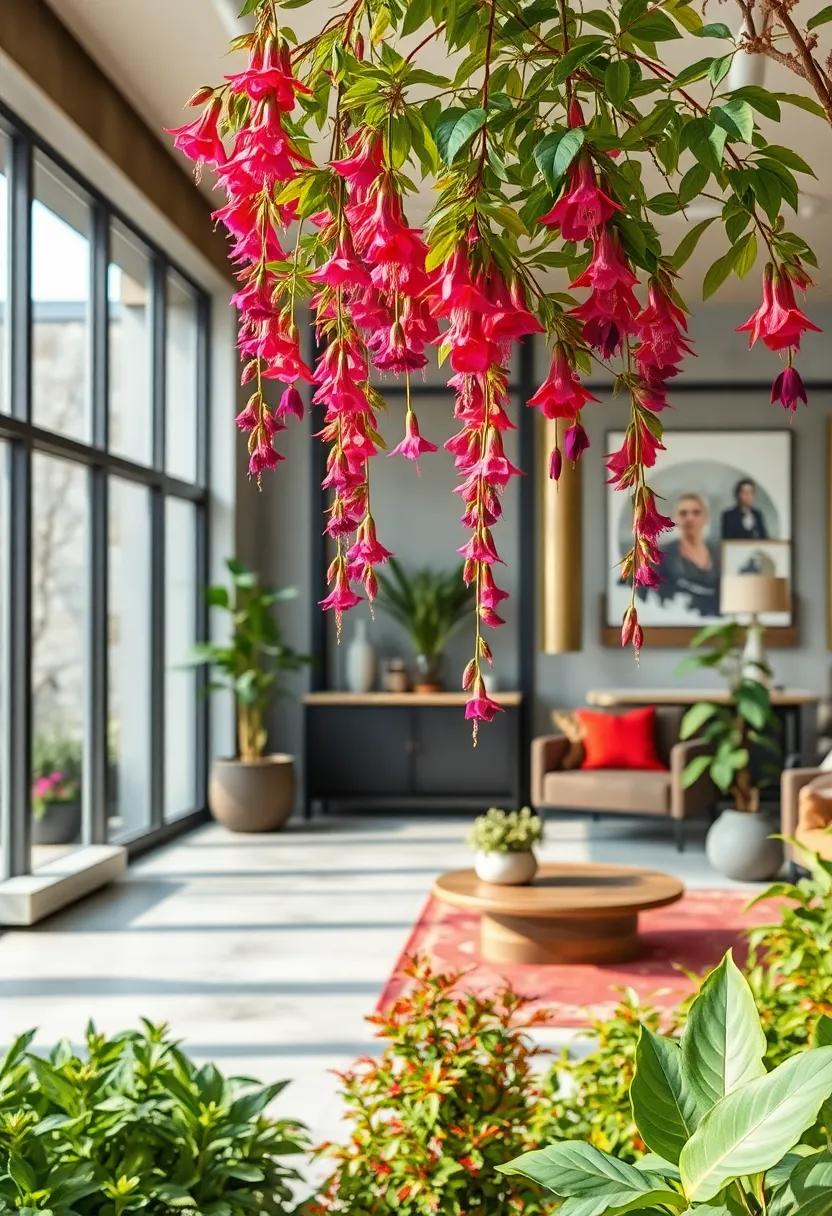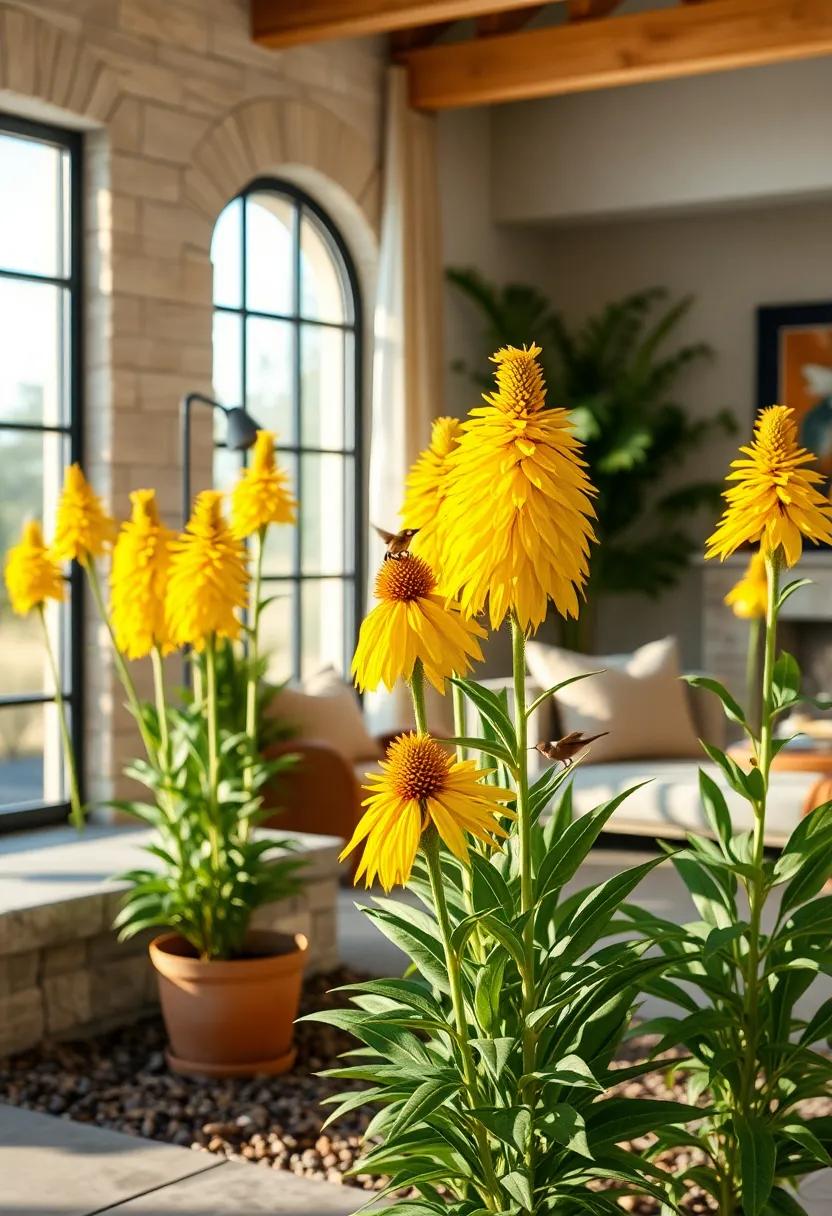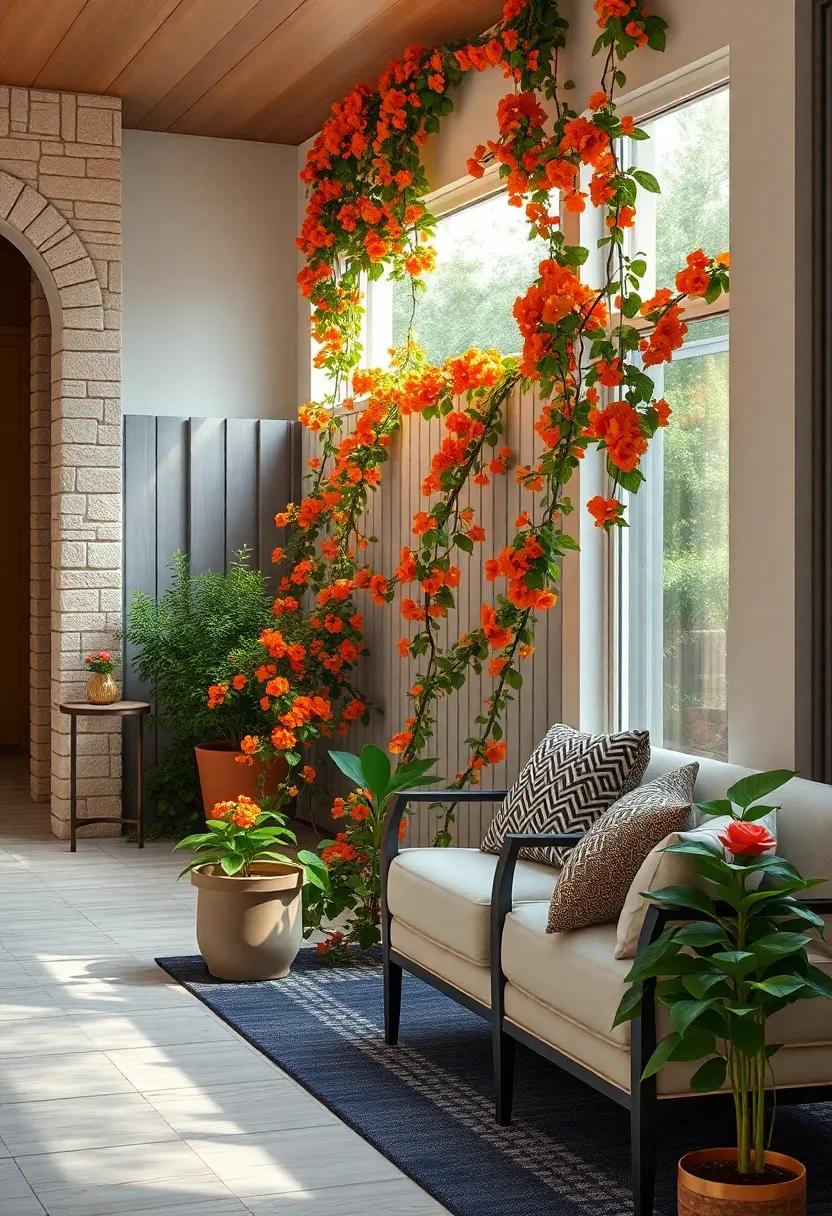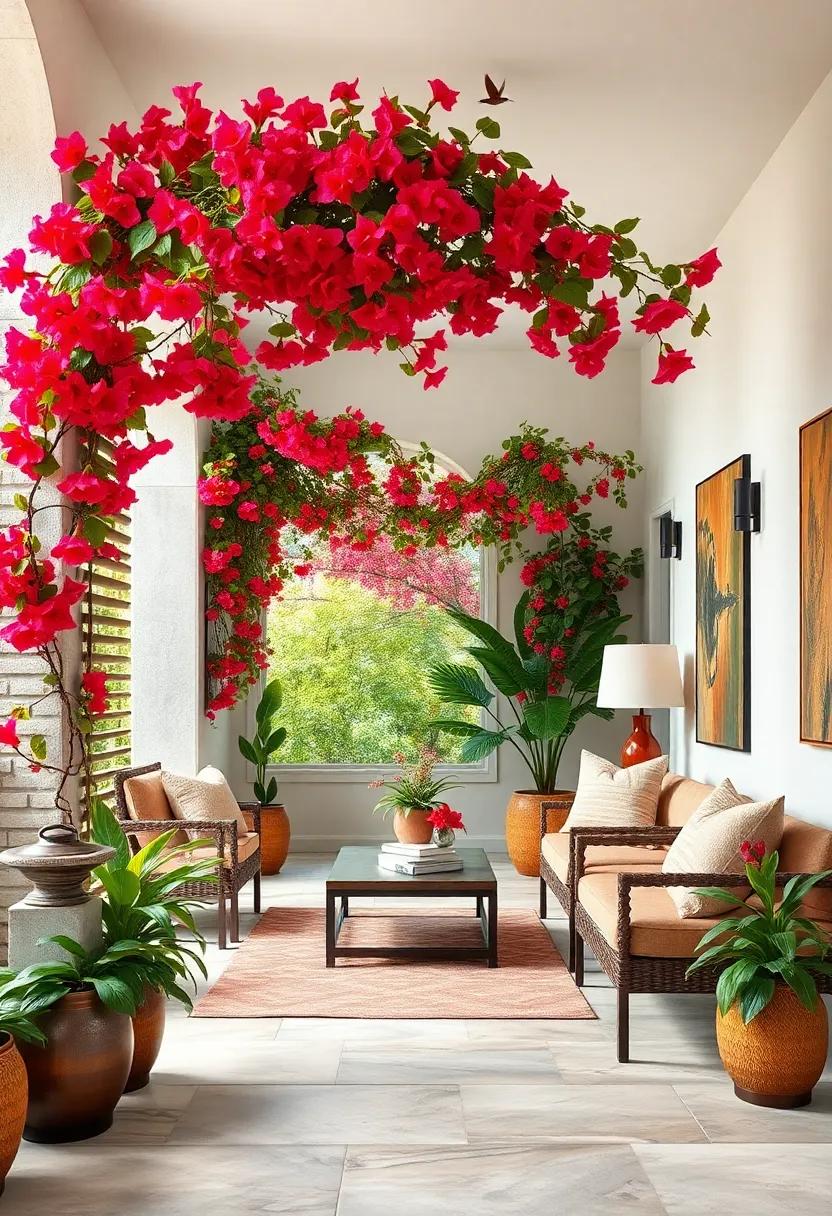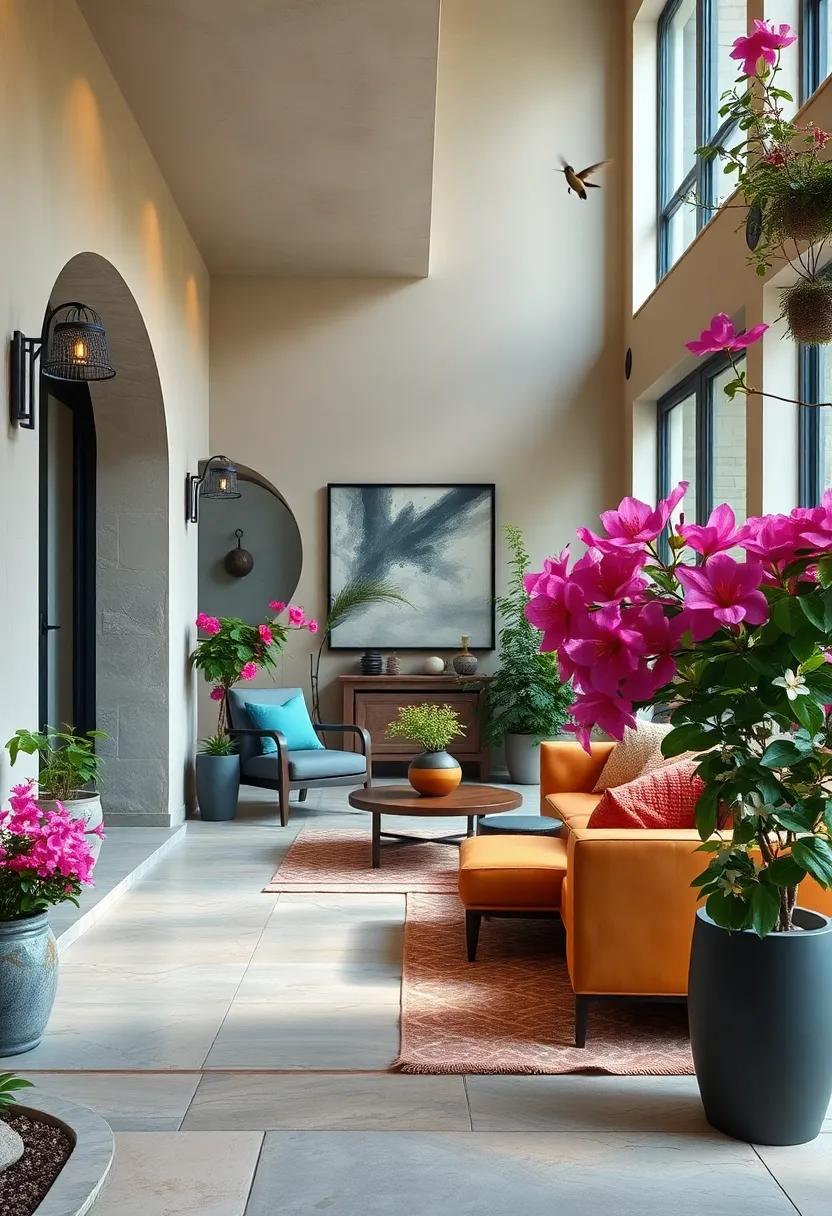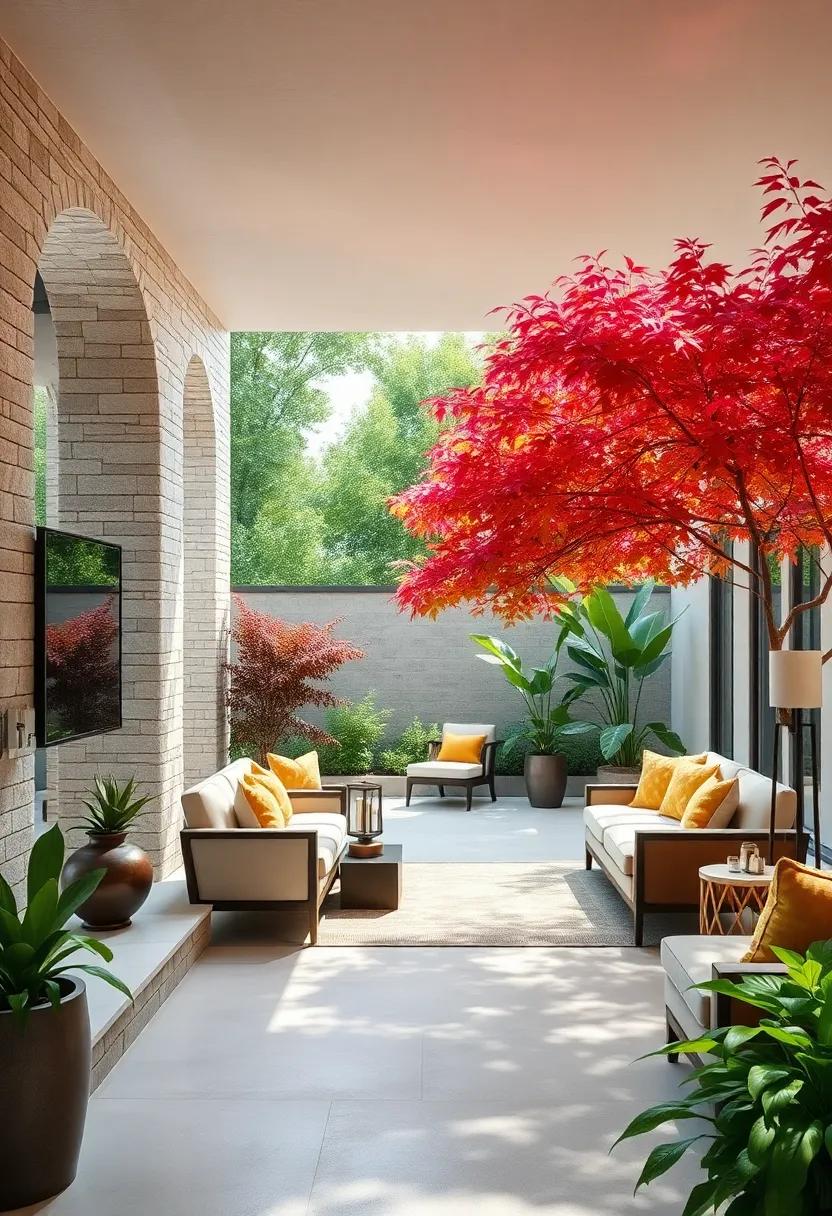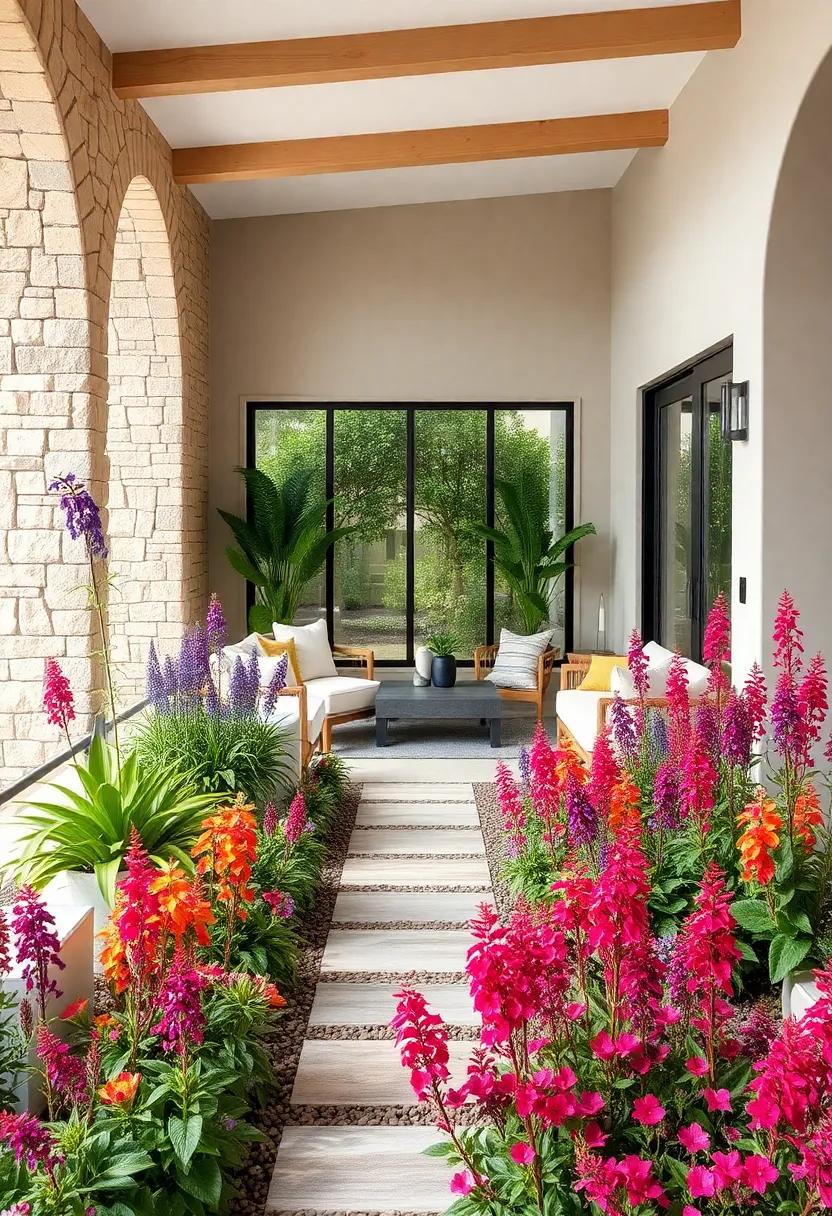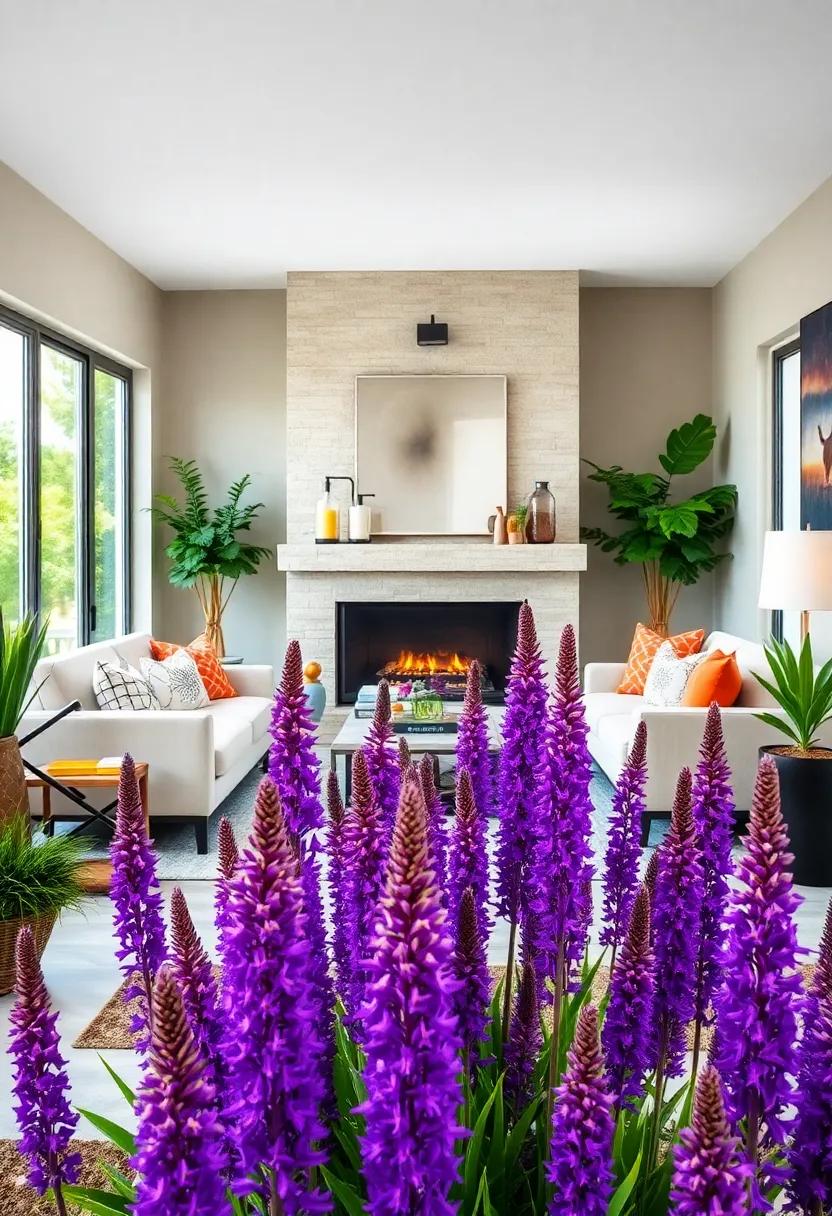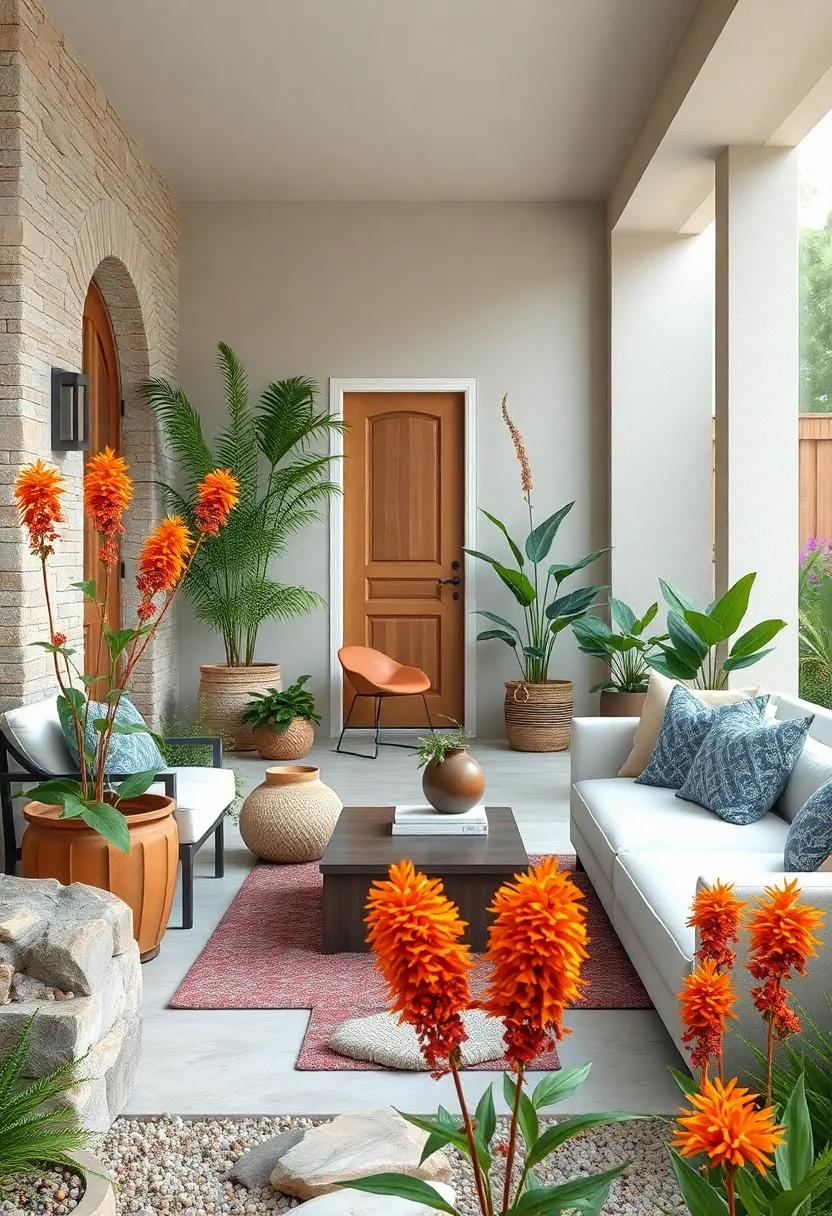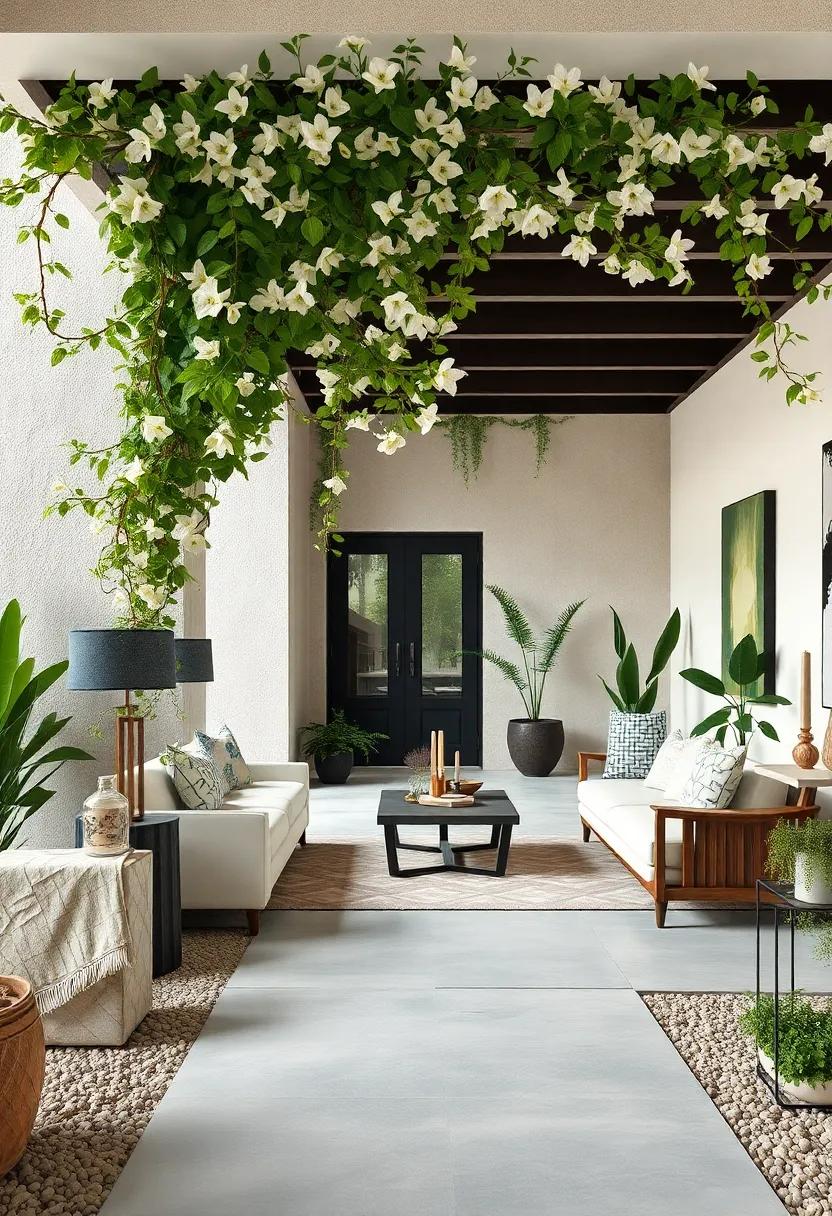Creating a Front Yard Hummingbird Highway: Top Plants to Attract Them
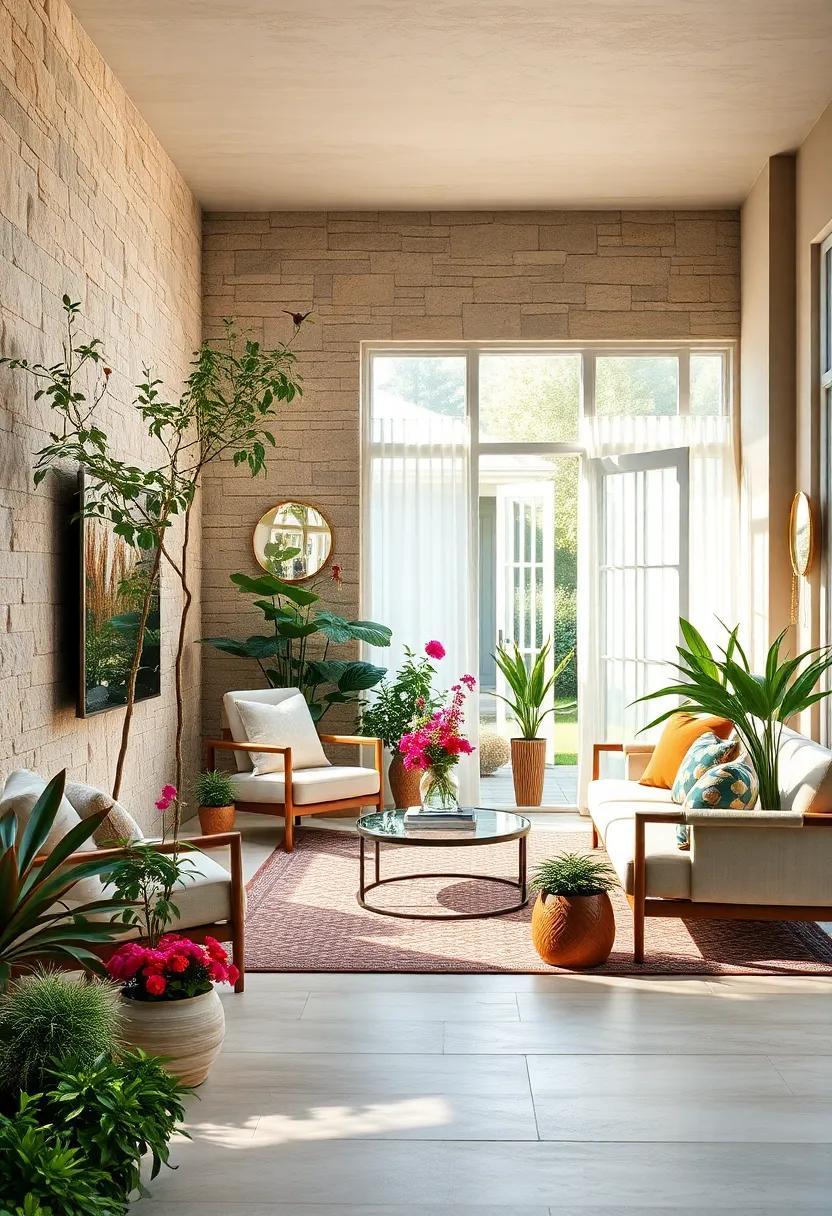
Imagine transforming your front yard into a vibrant sanctuary buzzing with the delicate hum of hummingbirds. These tiny aviators, with their iridescent feathers and rapid wingbeats, are not only captivating to watch but also play a vital role in pollination. Creating a “hummingbird highway” right outside your doorstep is easier than you might think-it begins with choosing the right plants that beckon these aerial acrobats. In this article, we’ll explore the top blooms and greenery that can turn your garden into a fluttering oasis, inviting hummingbirds to visit, feed, and brighten your days with their fleeting presence.
Vibrant Red and Orange Trumpet Flowers That Draw Curious Hummingbirds Into Your Front Garden
Few blooms captivate hummingbirds quite like the radiant, trumpet-shaped flowers bursting with hues of fiery red and glowing orange. These eye-catching blossoms not only brighten your front garden with their vibrant colors but also serve as a natural invitation to the tiny aerial acrobats, eager to sip on their rich nectar. With their long, flared tubes perfectly designed for hummingbird beaks, plants bearing these vivid flowers act as dynamic feeders, providing a delightful feast that encourages repeated visits throughout the day.
To replicate this hummingbird magnet, consider incorporating plants renowned for their sumptuous nectar and striking colors. Some popular favorites include:
- Trumpet vine (Campsis radicans): A vigorous climber with dazzling, bell-shaped flowers that cascade in clusters.
- Red honeysuckle (Lonicera sempervirens): A trailing vine with tubular flowers bursting in saturated reds and oranges.
- Flame lily (Gloriosa superba): Exotic and fiery, perfect for adding drama to your landscape.
| Plant | Flower Color | Bloom Season | Hummingbird Appeal |
|---|---|---|---|
| Trumpet Vine | Fiery Orange-Red | Summer to Early Fall | Very High |
| Red Honeysuckle | Bright Scarlet | Spring to Summer | High |
| Flame Lily | Blazing Red-Orange | Summer | Moderate |
Delicate Clusters of Bee Balm Blossoms Bursting With Color to Invite Playful Hummingbird Visitors
Bee balm’s delicate clusters of vibrant blossoms serve as irresistible beacons to hummingbirds, drawing these charming aviators into your garden with their rich hues. The flowers come alive in shades of crimson, magenta, and soft lavender, each petal gently unfurling to offer a nectar feast. Their unique tubular shape fits perfectly with a hummingbird’s slender bill, making it easy for them to sip and swiftly dart through the air. This dance adds a kinetic brilliance to your front yard, where the buzzing of wings and flickers of color create a lively theatre of nature’s smallest acrobats.
Planting bee balm in well-drained, sunny spots can transform your landscape into a flourishing sanctuary for hummingbirds. Besides attracting these delightful visitors, bee balm also promotes biodiversity by supporting bees and butterflies. Consider grouping these blooms in clusters to heighten their visual and ecological impact. To maximize success, here’s a quick guide to their care:
- Soil: Rich, moist, and well-drained for optimal growth.
- Sunlight: Full sun to partial shade encourages more vibrant flowering.
- Water: Regular watering, especially during dry spells.
- Maintenance: Deadhead spent blooms to prolong flowering and prevent reseeding.
Lush Green Foliage Surrounding Bright Scarlet Salvias That Act as Natural Hummingbird Magnets
Nestled amid a vibrant sea of verdant leaves, bright scarlet salvias create a beacon of color that can be seen from afar by hummingbirds fluttering through your front yard. These striking blooms not only brighten the landscape but also serve as an irresistible buffet for these tiny aviators. The deep red tones of the salvias contrast beautifully with their lush green surroundings, making each blossom stand out like a fiery jewel. Beyond their aesthetic appeal, salvias produce nectar that is rich and abundant-perfect fuel for the energetic hummingbirds as they make their daily rounds.
To maximize the allure of this hummingbird magnet, consider layering the foliage and flowers in a way that mimics a natural habitat. The dense greenery offers shelter and perching spots, while the salvias provide nourishment, drawing these birds in repeatedly. Here’s why this combination works so well:
- Visual Attraction: Bright red hues catch the attention of hummingbirds from great distances.
- Nectar Supply: Salvias are nectar-rich, serving as a high-energy snack.
- Protective Cover: Thick foliage offers safety from predators and harsh weather.
- Perch Friendly: Leaves and stems provide resting spots between feedings.
| Feature | Benefit for Hummingbirds |
|---|---|
| Bright Scarlet Flowers | Easy to spot, high nectar content |
| Lush Green Foliage | Provides shelter & resting places |
| Continuous Blooms | Ensures a steady food source |
| Compact Plant Clusters | Creates a hummingbird-friendly microenvironment |
Elegant Purple Penstemon Blooms Creating a Contrast That Hummingbirds Cannot Resist
Vibrant purple penstemon flowers serve as a dynamic beacon to hummingbirds darting through your garden. Their tubular blossoms, boasting rich shades of lavender to deep violet, not only add a striking splash of color but also provide an ideal shape for hummingbird feeding. When paired with lighter foliage or contrasting flowers, these blooms create a visual spotlight that draws these tiny nectar enthusiasts from afar.
Incorporating penstemon into your planting scheme offers multiple benefits beyond their alluring palette. Their long-lasting flowers sustain hummingbird interest throughout the season, while the plant’s sturdy, upright stems gracefully sway in the breeze, adding both texture and movement. To maximize attraction, consider companion plants with contrasting colors such as bright yellows or whites alongside penstemon, creating a multifaceted nectar corridor.
- Flower color: Deep purples with hints of magenta
- Bloom shape: Tubular, perfect for hummingbird beaks
- Seasonal interest: Long bloom period from late spring to fall
- Companions: Yellow coreopsis, white salvia, and red bee balm
| Penstemon Variety | Bloom Time | Hummingbird Appeal |
|---|---|---|
| Penstemon Digitalis | Late Spring to Early Summer | Moderate |
| Penstemon Hirsutus | Mid Summer | High |
| Penstemon Strictus | Summer to Early Fall | Very High |
Sweet Nectar Flowing From Fiery Red Cardinal Flowers Providing Energy for Busy Hummingbirds
Vibrant and striking, red cardinal flowers are a spectacular sight that doubles as an irresistible energy source for hummingbirds darting through your front yard. These fiery blooms, with their tubular shape and rich color, are perfectly designed to accommodate the long, delicate beaks of hummingbirds, allowing them to sip the sweet nectar hidden deep within. As they feed, the hummingbirds become lively pollinators, helping your garden flourish while sustaining their high-energy lifestyle. The combination of bright red hues and abundant nectar makes these flowers a magnet for these tiny aviators, ensuring your yard becomes a buzzing hummingbird hotspot.
When planning to integrate this hummingbird favorite into your garden, consider pairing it with other nectar-rich plants to create a continuous bloom and food supply. This approach not only enhances the aesthetic appeal but also guarantees your hummingbird visitors have energy-packed meals throughout the season.
- Plant cardinal flowers in clusters to increase visual impact and feeding efficiency.
- Ensure access to morning sunlight, as it encourages longer flowering times.
- Maintain moist, well-drained soil to mimic their natural wetland habitats.
Trailing Fuchsia Blooms Dangling Gracefully To Catch the Eye of Hovering Hummingbirds
The delicate fuchsia flowers present a mesmerizing spectacle with their rich hues and unique shape that seem almost crafted to lure hummingbirds from afar. Their slender, tubular blossoms hang like tiny chandeliers, offering an inviting sip of nectar to these aerial acrobats. Planting varieties such as Fuchsia magellanica and Fuchsia ‘Dollar Princess’ along patios, window boxes, or hanging baskets can transform any front yard into a vibrant corridor thriving with hummingbird activity.
Why gardeners love trailing fuchsia:
- Year-round allure: Many fuchsias bloom from late spring to fall, providing a consistent nectar source.
- Shade friendly: Perfect for spots where other hummingbird-attracting plants may struggle.
- Versatility: Suitable for containers, trellises, or cascading over garden walls.
| Fuchsia Variety | Bloom Season | Ideal Location |
|---|---|---|
| Fuchsia magellanica | Late spring – Fall | Partial Shade |
| Fuchsia ‘Dollar Princess’ | Summer – Early Fall | Hanging baskets |
| Trailing Fuchsia hybrida | Late Summer | Patio Planters |
Sunlit Yellow Coneflowers Standing Tall as Friendly Landing Spots for Hovering Hummingbirds
These radiant sunlit yellow coneflowers rise confidently above the garden bed, their hardy stems offering a natural perch that gently rocks under the light weight of fluttering hummingbirds. Their bright, daisy-like blooms are more than just a splash of cheer-they serve as vital pit stops where hummingbirds can briefly rest and refuel during their energetic flights. The tall, sturdy stalks provide excellent vantage points, allowing these tiny aviators to scout the garden for the next nectar-rich treasure.
Beyond aesthetics, these coneflowers play an essential ecological role, inviting hummingbirds into your outdoor sanctuary with their rich nectar and vivid colors. Incorporating them in your hummingbird-friendly garden brings not only visual delight but also supports local pollinator populations. Key attributes that make these blooms harmonious landing spots include:
- Long flowering season, ensuring consistent nectar availability
- Robust build that withstands windy days
- Bright yellow petals that catch the eye of passing hummingbirds
| Feature | Benefit for Hummingbirds |
|---|---|
| Height | Easy perching spots above foliage |
| Color Intensity | Attracts attention from afar |
| Nectar Richness | Provides energy for long flights |
Bright Orange Honeysuckle Vines Curving Along the Fence as a Hummingbird Nectar Highway
Vividly weaving along your fence, these bright orange vines become more than just a splash of color; they transform your yard into a vital nectar corridor for hummingbirds. Their tubular blossoms are perfectly crafted for these tiny aviators, offering an abundant source of sugary sustenance. As the vines climb and curve elegantly, they create a natural pathway encouraging hummingbirds to glide effortlessly from one bloom to the next, ensuring a steady flow of energy for these dazzling pollinators.
Incorporating this vibrant honeysuckle not only enhances visual appeal but also serves an ecological purpose. Benefits include:
- Continuous bloom cycle supporting seasonal hummingbird visits
- Easy maintenance with natural vine growth patterns
- Encouragement of pollinator diversity beyond hummingbirds
| Feature | Benefit |
|---|---|
| Bright Orange Hue | Attracts hummingbirds from a distance |
| Tubular Flowers | Ideal shape for feeding |
| Vine Growth Habit | Creates natural nectar highways |
| Continuous Bloom | Supports hummingbird migration |
Deep Magenta Zinnias Splashing Front Yard Beds With a Rainbow Palette to Attract Hummingbirds
Deep magenta zinnias are like vibrant beacons in your front yard, drawing hummingbirds with their dazzling spectrum of colors. Their rich, saturated petals offer a stark contrast against lush green foliage, which not only brightens up the landscape but also creates a natural “welcome sign” for these tiny aerial acrobats. Planted in well-drained beds, zinnias thrive in full sun and reward your garden with weeks of uninterrupted blooms, providing a continuous source of nectar that keeps hummingbirds coming back. Their sturdy stems and clustered flowers are perfectly designed for these energetic birds to hover and sip effortlessly.
Incorporating a rainbow palette of zinnias adds more than just visual delight-it establishes a dynamic feeding station tailored to the hummingbirds’ preferences. Consider mixing deep magentas with fiery reds, sunny oranges, and bright yellows to create a multihued feast that catches light and attention from across the street. Here’s a quick guide to maximizing appeal:
- Placement: Group zinnias near other hummingbird favorites like salvia or bee balm to concentrate nectar sources.
- Water: Install a nearby drip or mister to provide humidity and hydration-hummingbirds love it.
- Maintenance: Deadhead spent blooms regularly to encourage more flowering and extend the nectar supply.
Soft Pink and White Columbine Flowers Offering Diverse Feeding Options for Different Hummingbird Species
Delicately draped in shades of soft pink and pristine white, these columbine flowers serve as a natural banquet, inviting a variety of hummingbird species with their uniquely structured blooms. Their slender, tubular petals extend gracefully, perfectly accommodating the varying bill lengths of different hummingbirds, from the ruby-throated to the broad-tailed. This botanical diversity ensures that each species can effortlessly access nectar without competition, turning your front yard into a hummingbird-friendly haven.
Benefits of Soft Pink and White Columbine Flowers:
- Provide multiple nectar sources suited for diverse hummingbird bills
- Offer landing platforms for easier feeding
- Bloom over an extended period, sustaining hummingbird visits longer
- Enhance garden aesthetics with subtle color variations that attract pollinators
| Hummingbird Species | Preferred Flower Feature | Columbine Adaptation |
|---|---|---|
| Ruby-throated | Medium-length tubular corolla | Moderate pink tubes for easy access |
| Broad-tailed | Sturdy, broader base | White blossoms with wide openings |
| Black-chinned | Longer nectar spurs | Extended pink spurs on select flowers |
Radiant Scarlet Trumpet Vine Blossoms Sweeping Over Arbors to Welcome Fluttering Hummingbirds
Scarlet trumpet vines are nature’s vivid invitation for hummingbirds, their fiery red blossoms cascading like waterfalls over arbors and trellises. These trumpet-shaped flowers are not merely a visual spectacle but a carefully tailored nectar source that appeals directly to the feeding habits of these agile aviators. As hummingbirds zip along your front yard corridor, these blossoms provide an irresistible buffet, encouraging frequent visits and lively aerial displays right in your outdoor sanctuary.
Incorporating these vines into your landscape not only enhances curb appeal but also creates a dynamic habitat essential for pollinators. Their vigorous growth offers shaded retreats and encourages a natural rhythm of foraging and resting. Below is a quick guide to ensure your trumpet vines thrive for maximum hummingbird attraction:
- Sunlight: Full sun is ideal for abundant flowering.
- Support: Sturdy trellises or arbors allow the vines to climb and spread freely.
- Watering: Regular deep watering promotes vibrant blooms, especially in dry spells.
- Pruning: Annual pruning enhances air circulation and encourages denser blossoms.
Springtime Azaleas Abuzz With Pollinators and Framing a Hummingbird Paradise
Azaleas in full spring bloom play host to a symphony of activity, their vibrant petals alive with the hum of busy pollinators. Bees and butterflies dart in and out, drawn irresistibly by the rich nectar these flowers offer. This bustling ecosystem not only supports these vital insect populations but sets the stage for the arrival of one of the garden’s most enchanting visitors-the hummingbird. Their swift, delicate movements and iridescent feathers are perfectly framed by clusters of azaleas, creating a living tableau of color and motion that brightens any front yard.
To cultivate a hummingbird-friendly garden centered on azaleas’ natural appeal, consider adding these companion plants:
- Trumpet Vine – Serves as a natural bridge, its funnel-shaped flowers perfect for a hummingbird’s long bill.
- Bee Balm – Adds a splash of red, pink, or purple with blooms that buzz with pollinator activity.
- Salvia – Provides towering stalks of nectar-rich blooms that hummingbirds adore.
| Plant | Flower Color | Bloom Time |
|---|---|---|
| Azalea | Pink, Red, White | Spring |
| Trumpet Vine | Orange, Red | Summer |
| Bee Balm | Red, Pink, Purple | Mid to Late Summer |
| Salvia | Blue, Purple, Red | Summer to Fall |
Colorful Flowering Maple Trees Casting Dappled Shade for Resting Hummingbirds in the Front Yard
In vibrant bursts of pink, orange, and red, flowering maple trees create a living canopy that not only beautifies your front yard but also invites hummingbirds to linger. Their five-lobed leaves produce a delicate, dappled shade that comforts these tiny aviators from the midday heat, encouraging them to rest between their energetic foraging flights. The vivid blooms of the maple’s blossoms provide an abundant source of nectar, acting as a beacon for hummingbirds passing through your neighborhood.
Key benefits of flowering maples for hummingbird habitats include:
- Long-lasting floral display that supports hummingbirds through multiple seasons.
- Fast-growing branches perfect for creating cozy perching spots.
- A natural shield from predators due to its semi-shaded branches and intricate leaf structure.
Choosing flowering maple trees transforms your yard into a sanctuary, where vibrant color meets vital function, inviting even the most cautious hummingbird to rest and recharge.
Clusters of Yellow Coreopsis Bringing Cheerful Spots of Light to a Front Yard Hummingbird Corridor
Clusters of sunny yellow Coreopsis create radiant patches that not only brighten the front yard but also serve as irresistible beacons for hummingbirds zooming through their daily routes. Their daisy-like blooms, vibrant and abundant, provide more than just visual delight; they offer ample nectar, making these plants a favored stopover point. Plant them in groups to amplify their visual impact, mimicking natural wildflower meadows that hummingbirds instinctively seek out. Consider mixing varieties like Coreopsis verticillata for delicate, lacy foliage that adds texture beneath the glowing flowers.
To maximize the effect and keep your hummingbird corridor thriving, pair Coreopsis with other nectar-rich companions such as salvia, penstemon, and gaura. These plants complement the yellow tones while extending the blooming season, ensuring there’s always a fresh sip within easy reach. Here’s a simple layout guide to position Coreopsis in your garden for optimal attraction:
| Plant | Placement | Bloom Time |
|---|---|---|
| Coreopsis | Front and Center | Early to Late Summer |
| Salvia | Behind Coreopsis | Mid Summer to Fall |
| Penstemon | Mixed in Edges | Late Spring to Summer |
| Gaura | Staggered Clusters | Summer to Fall |
- Tip: Grouping Coreopsis in multiples of three or five helps mimic natural patterns, making your hummingbird highway feel more like home.
- Maintenance: Deadhead spent blooms to encourage continuous flowering and keep the yellow bursts lively throughout the season.
Nectar-Rich Salvia Varieties Arranged in Patterns That Guide Hummingbirds Through Your Garden
Establishing a vibrant pathway for hummingbirds is an artful dance of color, scent, and structure. Salvia stands out as a stellar choice due to its nectar-rich blossoms that hummingbirds find irresistible. To truly captivate these tiny aviators, arrange various Salvia species in flowing, curved patterns that mimic natural flight paths. Each curve and cluster acts like a visual cue, inviting hummingbirds to explore deeper into your garden paradise. Consider mixing taller Salvias like Salvia guaranitica with the compact charm of Salvia microphylla to create layers that both attract and accommodate hummingbirds’ agile wings.
Choosing varieties with shades from deep indigo to fiery scarlet ensures a striking contrast that catches the hummingbirds’ keen eyes. Groupings spaced about 18 inches apart allow for easy navigation while ensuring each bloom gets its due attention. Below is a quick guide to some favored nectar-heavy Salvias that you can weave into your garden mural, enhancing both the allure and the directional flow for your hummingbird visitors:
| Salvia Variety | Flower Color | Average Bloom Time | Height |
|---|---|---|---|
| Salvia guaranitica | Deep Blue | Summer to Fall | 4-6 ft |
| Salvia microphylla | Red to Pink | Spring to Fall | 2-3 ft |
| Salvia greggii | Scarlet | Late Spring to Fall | 1.5-3 ft |
| Salvia nemorosa | Purple | Early Summer to Fall | 1-3 ft |
Bright Purple Liatris Spikes Providing Tall, Striking Feed Stations for Passionate Hummingbirds
Amid your front yard tapestry, these tall, vibrant spikes serve as beacons for hungry hummingbirds. Their columnar blooms burst with rich purple hues that glisten under sunlight, creating an irresistible nectar source perched high above the garden bed. The striking verticality of these flowers not only adds architectural interest but offers hummingbirds easy access while they hover gracefully. As the wind rustles through their slender stems, the gentle movement mimics natural nectar sites in the wild, enhancing the allure for these tiny aviators.
When planting, consider these pollinator-friendly tips for maximizing their impact:
- Group several spikes together for a concentrated landing zone
- Place near water sources to create a complete feeding habitat
- Combine with native wildflowers to sustain year-round nectar supply
- Ensure full sun exposure to intensify flower coloration and nectar production
Orange Butterfly Weed Flowers Creating a Butterfly and Hummingbird Friendly Front Yard Oasis
Among the vibrant selections to enrich your garden, the radiant orange butterfly weed stands out as a natural magnet for both butterflies and hummingbirds. This hardy perennial flourishes under full sun, creating a buzzing sanctuary where these delicate creatures can thrive. Its clusters of nectar-rich blooms provide an irresistible buffet, especially valuable during migration seasons. Nestled among green foliage, the fiery orange flowers not only add stunning color but also enhance biodiversity by supporting pollinator health and reproduction. Gardeners who embrace butterfly weed find themselves cultivating a lively ecosystem right at their doorstep.
To maximize the appeal of butterfly weed for your aerial visitors, consider the following care tips that encourage robust growth and continual flowering:
- Plant in well-draining soil: Ensures roots remain healthy and drought resilient.
- Water sparingly: Butterfly weed tolerates dry spells, discouraging root rot.
- Deadhead regularly: Promotes prolonged blooming and more vibrant flower clusters.
- Avoid chemical pesticides: Keeps pollinators safe and supports their natural lifecycle.
| Attribute | Benefit for Pollinators |
|---|---|
| Bright Orange Flowers | High visibility attracts butterflies and hummingbirds |
| Nectar-Rich Blooms | Provides essential energy for flight and migration |
| Long Bloom Period | Offers reliable food source throughout the growing season |
White Trumpet Honeysuckle Blossoms Twining Through Garden Structures to Form a Sweet-Scented Pathway
Delight your front yard with the elegant charm of white trumpet honeysuckle, a plant that effortlessly weaves its fragrant blooms through trellises, arbors, and pergolas. These slender, tubular flowers are irresistible to hummingbirds, providing both nourishment and a graceful stage for their delicate dances. Their sweet scent lingers in the air, creating an inviting pathway that not only attracts these tiny aviators but also enchants anyone strolling by. As the blooms unfurl, watch how they transform plain structures into vibrant corridors, alive with the buzz and flutter of nature’s most skilled fliers.
Why White Trumpet Honeysuckle is Perfect for Your Garden:
- Produces abundant nectar-rich flowers ideal for hummingbird feeding.
- Fast-growing vines that cover structures quickly, providing shade and aesthetic appeal.
- Long blooming season from late spring through summer, ensuring continuous interest.
- Fragrant blossoms that enhance the sensory experience of your outdoor space.
| Feature | Benefit |
|---|---|
| Flower Shape | Tubular – Ideal for hummingbird beaks |
| Growth Habit | Vining – Perfect for vertical structures |
| Scent | Sweet and strong – Attracts pollinators |
| Bloom Duration | May to August – Long feeding season |
Bursts of Red and Yellow Marigold Blooms Adding Vibrancy and Attracting Colorful Hummingbird Guests
The striking combination of red and yellow marigold blooms serves as a radiant beacon in any garden, instantly energizing your front yard with bursts of sunshine and warmth. These vibrant hues not only catch the eye but also act as irresistible invitations to hummingbirds, which are naturally drawn to bright colors. Marigolds are a powerful element in your hummingbird highway, their rich nectar offering a vital energy source that fuels these tiny aerial acrobats as they dart among the flowers.
Beyond their vivid colors and sweet nectar, marigolds also bring practical benefits to your garden ecosystem. Their natural pest-repellent properties help maintain a healthy, sustainable environment, ensuring that your hummingbird guests have a safe and flourishing habitat. Consider planting marigolds in clusters or lining pathways to create a continuous visual and pollinator-friendly corridor, highlighted by:
- Dense flower clusters that maximize nectar availability
- Mixed red and yellow varieties to sustain hummingbird interest over time
- Companion planting with herbs to enhance pest protection
| Variety | Flower Color | Bloom Duration | Hummingbird Attraction |
|---|---|---|---|
| Tagetes erecta | Bright Yellow | Mid-Summer to Fall | High |
| Tagetes patula | Deep Red, Orange | Early Summer to Frost | Very High |
| Tagetes tenuifolia | Golden Yellow | Long Bloom Season | Moderate |
Future Outlook
Transforming your front yard into a hummingbird highway is more than a simple gardening project-it’s an invitation to witness nature’s most delicate dancers up close. By choosing the right plants that offer vibrant color, abundant nectar, and welcoming habitats, you create a vibrant sanctuary that hums with life and energy. Whether you have a sprawling garden or a modest patch of green, these top plants will help you cultivate a space where hummingbirds not only visit but thrive. So, plant thoughtfully, watch patiently, and enjoy the swift, sparkling presence of these tiny jewels of the sky flitting through your very own front yard.

